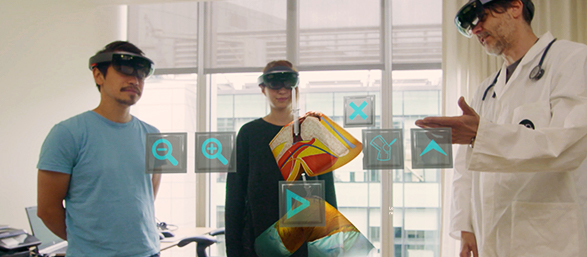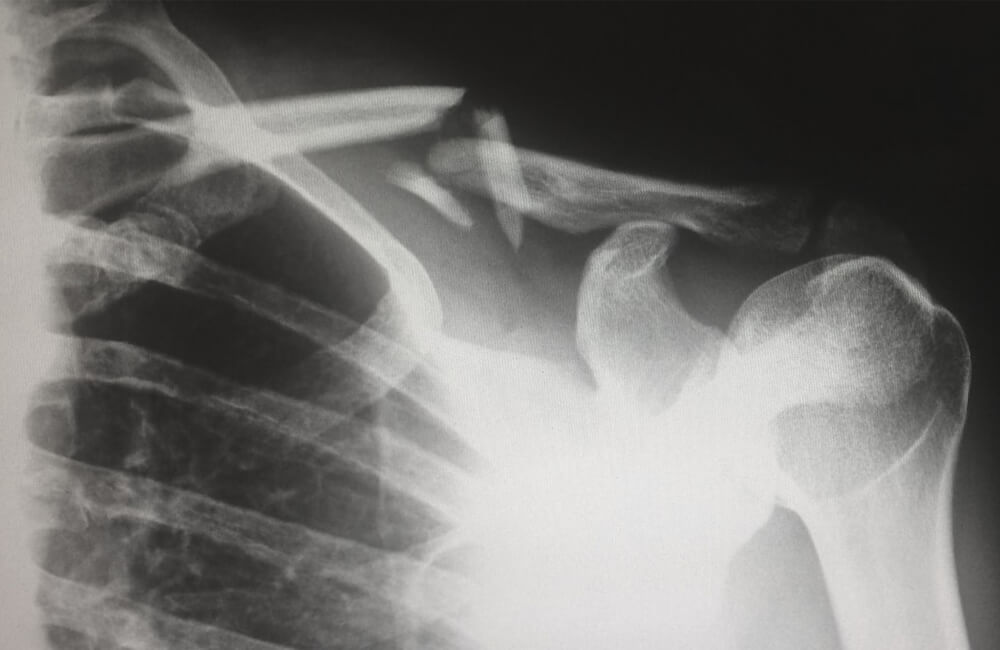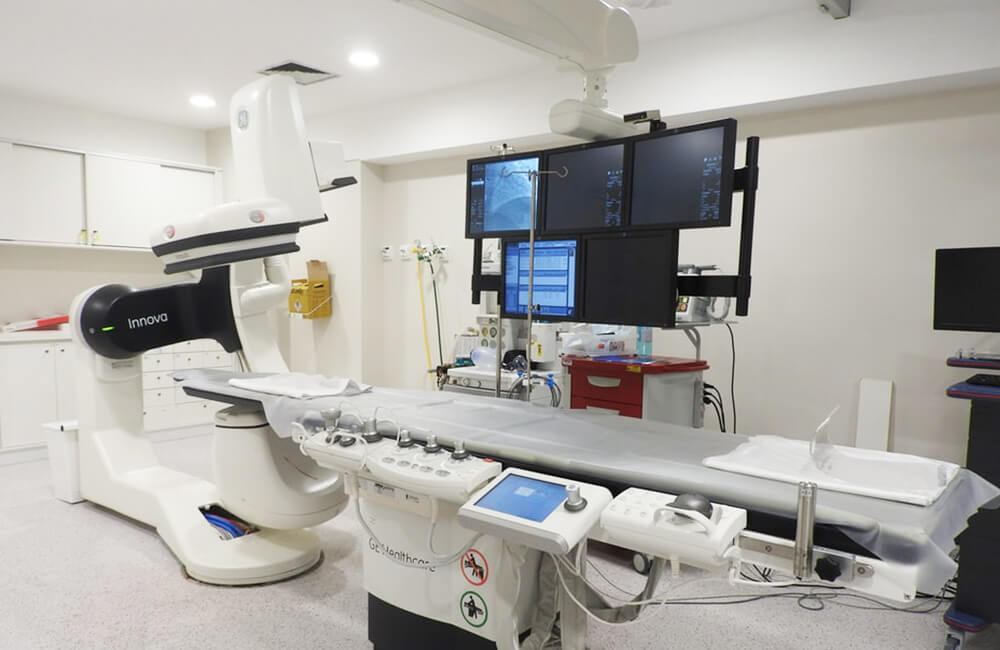

Is VR & AR Ready to Advance Spinal Surgery?
Virtual reality (VR) and augmented reality (AR) are preparing to make major improvements to spinal surgery, having adapted to overcome many previous concerns and become more readily available.
Increased adoption of this technology could bring countless benefits for the space. It would help support surgical training and planning. Plus, it could make procedures safer, more accurate and more efficient. This would save hospitals time and resources, while improving patient outcomes.
Before we go into more detail about the technology, it’s important to outline what VR and AR both are and do.
VR devices provide a computer-generated simulation in which a surgeon can interact within an artificial 3D environment. Therefore, its applications in spinal surgery stay within training and planning.
Whereas, AR devices give the user an interactive experience of a real-world environment where the objects that reside in the real world are enhanced by computer-generated perceptual information. So, while they still support training and planning, these devices have more exciting applications for intraoperative surgery.
In surgery, this works by using a combination of AR hardware and software to superimpose a 3D image of the patient’s anatomy on the operating site to help the surgeon visualise the spatial details of a patient’s underlying anatomy in real time.
A Slow Start
While VR and AR are relatively new, they’re both a type of computer assisted orthopaedic surgery (CAOS) which is not. There’s been CAOS devices around since the 1990s.
While there was some initial uptake for CAOS devices simply because they were ‘niche’ or ‘the future’; this hasn’t been enough to take them to the mainstream. The medical world requires compelling data to prove clinical effectiveness and this data has always been lacking.
Even with compelling data now beginning to accumulate, still only a fraction of hospitals uses CAOS. There’s criticisms that the devices are expensive, time-consuming to use and not needed by experienced surgeons.
That’s why in the 25 years that COAS technology has been available, only 25% of US hospitals have adopted it and only an estimated 15% of surgeons at those facilities regularly use the equipment (according to the American Hospital Association).
The Next Generation of CAOS
Like their predecessors, the next generation of CAOS technology that use VR and AR have experienced slow adoption. But all is about to change.
In 2019, there were encouraging signs at major orthopaedics and spine conferences like the American Academy of Orthopaedic Surgeons (AAOS) and North American Spine Society (NASS).
Both events signified a palpable change with several manufacturers showcasing their VR and AR solutions. At NASS, this included companies like Holosurgical Inc., BrainLab AG, Novarad and Augmedics.
Later that year, Augmedics reached a major milestone for the space when they became the first company to receive FDA approval for an AR, intraoperative device for spine surgeries. This was with their xvision Spine System, which is a guidance tool.
There’re lots of applications for VR and AR in spinal surgery, which will bring advantages to both surgeons and patients.
VR and AR tools can be used as a visual aid to reassure patients about their upcoming operations, with surgeons walking patients through their procedures. In turn, this has been known to give patients more confidence in the surgeon and make them more compliant throughout the process.
The technology can also be used pre-operatively for training and planning purposes, as well as post-operatively to provide surgical data analytics. This is a tool that has become a vital resource for medical device manufacturers, with travel restricted, VR has become a key tool to continue high quality medical education on a global scale.
Companies that provide these tools include FundamentalVR, OssoVR, ImmersiveTouch, Surgical Theatre and Holosurgical (who’ve recently been acquired by Surgalign)
However, what’s most exciting for this space, is AR’s intraoperative applications, which enable more consistent and accurate surgical technique across an array of procedure types and surgeon experience levels, translating to better patient outcomes.
Unlike previous CAOS technology, AR software creates a 3D-image (not 2D) of the patient’s anatomy and superimposes it on the patient. The software then utilises patient registration to overlay those images onto the patient’s planned surgical site, providing surgeons with real-time visualization of the underlying anatomy.
Most AR platforms are also able to segment which anatomical landmarks are displayed at a given time – such as bony structures versus various soft tissues, giving surgeons the ability to obtain X-ray vision of sensitive anatomical structures while never looking up from the patient.
AR technology has also been said to be more ergonomically comfortable for surgeons because they can maintain eye contact on the patient rather than looking at a separate screen. This contrasts with traditional navigation, where surgeons view anatomical structures on a flatscreen monitor outside of the surgical field.
The Next Steps
Despite these advantages, only a handful of companies have entered the market with their own devices. That’s because there are still a few hurdles to overcome before this space can fulfil its true potential.
For a system to be acceptable for intraoperative use, an error range of 1mm or less is required. However, it’s believed that the current window of error for many AR technologies is as much as 1cm – 10 times greater than what is needed.
There are also concerns that the technology doesn’t offer an efficient workflow, with patient registration being a time-consuming process.
However, this is improving. For example, 7dSurgical have introduced image guided technology (rather than X-Ray vision) which can register patients in less than 20 seconds – compared to the usual 30 minutes.
While this improvement is exciting, this is not yet widespread, so the issues remains. The same goes for a much bigger hurdle that’s plagued COAS technology throughout its existence: there’s not enough data to prove its clinical and cost effectiveness.
Some data on the accuracy of pedicle screw placements using AR exists, but it’s limited. Plus, the linkage from accuracy of screw placement to tangible clinical and economic benefit has not been established.
Accuracy alone will not sell systems. If it did, we would see more than the current low penetration and sparse utilisation of standalone navigation systems in orthopaedic surgeries. So, more data is needed to prove this technology’s worth and increase adoption throughout the industry.
VR and AR systems are starting to make commercial headway, with the first applications in training and education.
This in itself should encourage wider adoption of the technology, as future generations of surgeons will be more practiced with VR and find the shift to AR in the surgery suite much more natural than their predecessors.
There’s obvious barriers to overcome, but the future of the space is exciting. This is mirrored in the medical market, with major players like Medtronic making acquisitions (Digital Surgery and Medicrea) within the space.
As the technology evolves and with important data gathered, I look forward to seeing this enter the mainstream of spinal surgery. That’s because the advantages are so significant. It will make procedures safer, more accurate and more efficient - saving hospitals time and resources, while improving patient outcomes.
If you'd like to discuss this technology with me more or talk about the recruitment service that CM Medical offer, then please email me at Daniel.Spencer@medical-cm.com.
For more content like this, visit my consultant page.
Recommended.

Innovative Spine & Orthopedic Implant Technologies to Watch.
Orthopedics isn’t necessarily a market commended for its digital innovation, but these five companies are proving differently with their latest product launches. Click to read more.

What Innovations Could Shape the Future of Orthopaedics?
To achieve personalised care in orthopaedics, we need advances in AI, surgical robotics, augmented reality (AR) and more! But where will this innovation come from? Click to find out.

3 Technologies Revolutionising Spinal Surgery.
New innovations have continued to advance surgery – especially within the spinal space. I wanted to highlight the revolutionary technology that is driving this change and shaping the future of the space.

How to Take Your Medical Device to Market.
In this episode, I'm joined by Steven Haken and Deborah Rizzi from market access and reimbursement specialists Odelle Technology to discuss how to take a medical device to market.
Comments.